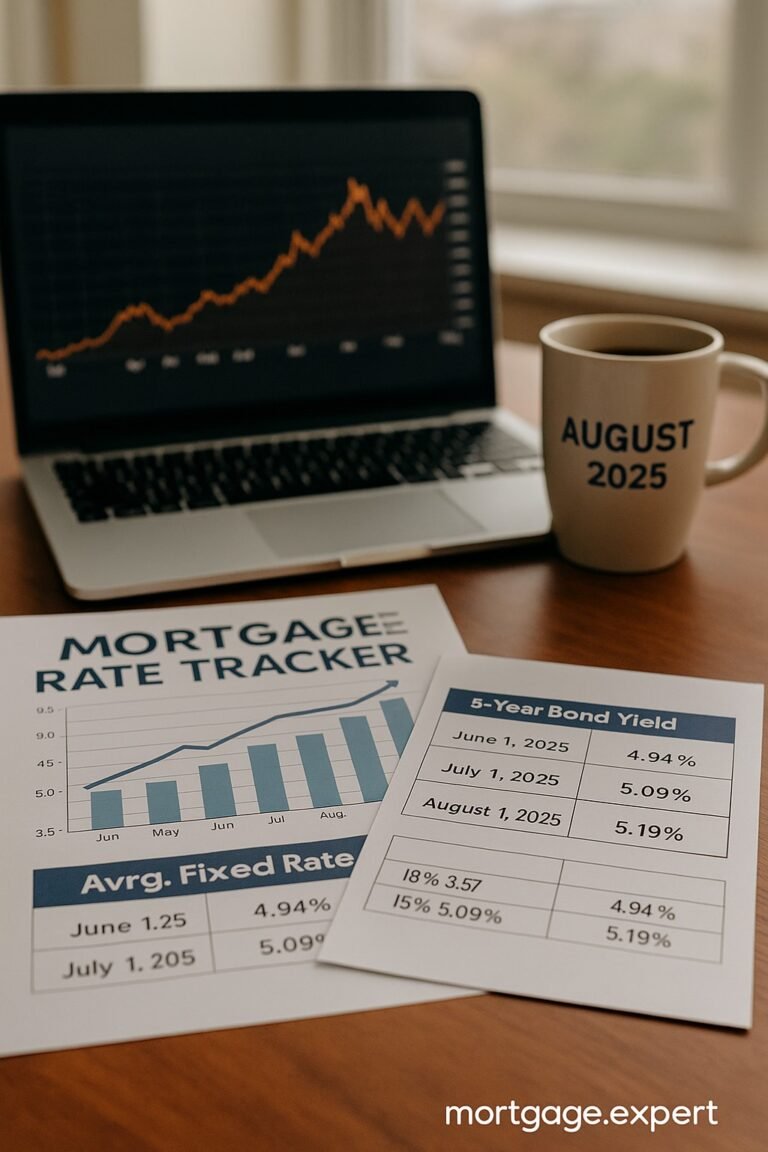
Mortgage Rate Lock-in in Canada: Should You Lock Your Rate in 2025?
Interest rates have been jumping up, sliding down, and bouncing around more than ever in Canada’s housing market. And if you’re about to get a mortgage, the question is: should you lock your rate?
Whether you’re a first-time buyer or refinancing your current home, the idea of ‘locking in a mortgage rate’ can either save you money — or backfire if done at the wrong time.
In this guide, we’ll walk through what rate lock-in actually means in 2025, how long you can hold a rate, and whether it’s the right move for your situation.
What is a Mortgage Rate Lock-in?
A rate lock-in (also called a rate hold) is when your lender agrees to reserve an interest rate for you for a certain period. This means even if interest rates go up tomorrow, you’re still eligible to get the lower rate you locked in — as long as your mortgage closes within the lock-in window.
It gives buyers breathing room. You can shop for homes knowing your mortgage rate won’t suddenly jump.
🔒 How a Mortgage Rate Lock Works – Step by Step
A mortgage rate lock guarantees today’s rate for a set period — usually 60 to 120 days — protecting you from increases while you finalize your home purchase or renewal.
📝 Step 1: Apply for Pre-Approval
You submit your income, credit, and down payment details to a lender or broker.
📄 Step 2: Lock in the Rate
Your rate (e.g., 5.29%) is locked for up to 120 days. This protects you even if market rates rise.
🛒 Step 3: Shop for Your Home
You now have time to find the right property without worrying about rate increases.
🏡 Step 4: Close Within the Lock Period
As long as you close before the lock expires, you get the guaranteed rate — even if current rates are higher.
⚠️ What If Rates Fall?
Some lenders may “float down” your rate — others don’t. Ask your broker if rate drops are honoured before closing.
Why Would You Want to Lock Your Rate?
It’s simple: protection
Mortgage rates in Canada are influenced by economic shifts, inflation reports, central bank moves — and sometimes, even global events. If you’re house hunting and rates shoot up by 0.50% while you’re finalizing an offer, that can cost you thousands in extra interest.
Locking your rate now means you don’t risk paying more later.
How Long Can You Lock a Mortgage Rate in Canada?
Most lenders in Canada will lock your rate for 90 to 120 days. Some may offer shorter 45–60 day holds for quick closings. A few even stretch it to 130–150 days — but that’s rarer.
The clock starts ticking the day you get pre-approved. So if you’re not serious about buying within 3–4 months, don’t rely solely on a rate lock.
📅 Mortgage Rate Lock Periods by Lender (2025)
Each lender offers a different pre-approval rate hold window — typically ranging from 90 to 130 days. Here’s how the top banks and brokerages compare:
| 🏦 Lender | 🕒 Rate Hold Period | 📌 Notes |
|---|---|---|
| RBC | 120 days | Applies to fixed and variable pre-approvals |
| TD Canada Trust | 120 days | Fixed rates only; variable may vary |
| Scotiabank | 130 days | Longest among Big 5 banks |
| BMO | 130 days | Includes renewals and purchases |
| Mortgage Brokers (Average) | 90–120 days | Varies by lender access and product |
Real-Life Example: Aarav Secures His Rate Early and Saves Big
Aarav, a 32-year-old IT professional in Ottawa, got pre-approved for a $600,000 mortgage at 4.89% in January 2025. He locked that rate for 120 days.
In March, the Bank of Canada hiked rates, and most lenders raised their mortgage offers to 5.59%.
Because Aarav locked his rate, he still got 4.89% — saving roughly ₹22,000 in interest over the first 5 years compared to the new higher rate.
That one move gave him breathing space in his monthly budget and confidence during house hunting.
💸 Interest Paid Comparison: 4.89% vs 5.59%
Here’s how much interest you’d pay over the first 5 years on a $600,000 mortgage, assuming 25-year amortization and fixed monthly payments.
✅ 4.89% Interest Rate
- 🟢 Monthly Payment: ~$3,466
- 🟢 Interest Paid in 5 Years: $128,218
- 🟢 Principal Repaid: ~$79,782
🚨 5.59% Interest Rate
- 🔴 Monthly Payment: ~$3,697
- 🔴 Interest Paid in 5 Years: $147,912
- 🔴 Principal Repaid: ~$74,988
Does a Rate Lock Guarantee Approval?
No — and this is where many buyers get confused.
A rate lock is not a loan approval. It just protects the rate. You still need to go through income verification, credit checks, down payment confirmation, and pass the mortgage stress test.
If your financial situation changes before closing — say, you change jobs or take on new debt — the lender can still deny your full approval, even if your rate is locked.
What Happens If Rates Drop After You Lock?
Here’s the good news: some lenders offer a “float-down” option. That means if rates drop before you close, they’ll give you the better rate.
But not all lenders offer this.
This is where working with a mortgage broker really helps. Brokers can often negotiate better terms and switch you to a lower rate if it becomes available during your lock-in period.
📉 Timeline: Rate Lock, Market Drop & Float-Down Adjustment
Some lenders offer a “float-down” feature — letting you secure a lower rate if the market improves after you’ve locked in. Here’s how it typically plays out:
🔒 Day 0 – Rate Lock at 5.39%
You get pre-approved and your lender locks in a 120-day fixed rate.
📉 Day 60 – Market Rate Drops to 5.09%
Bond yields fall and lenders begin offering lower fixed rates to new clients.
✅ Day 75 – Float-Down Adjustment to 5.09%
Your lender agrees to match the current lower rate before closing.
🏡 Day 100 – Mortgage Closes at 5.09%
You close on your new home with the lower rate — saving money over your term.
Fixed vs Variable: Should You Lock a Floating Rate?
Usually, rate lock-ins apply to fixed-rate mortgages That’s because fixed rates are pre-set and easy to hold.
Variable rate mortgages, by nature, float with the prime rate. So they can’t really be ‘locked’ in the same way. However, you can still get pre-approved for a variable mortgage — your approval amount won’t change, but your future rate might.
If you want certainty, lock a fixed rate. If you’re chasing flexibility, go variable — but be ready for the ride.
Final Thoughts: When Does It Actually Make Sense to Lock In?
If you’re even thinking about buying a home in the next 3–4 months, locking in your mortgage rate can be a no-brainer. It costs nothing, doesn’t lock you into anything, and gives you peace of mind.
But remember — locking the rate doesn’t mean you’re approved. Always get your full pre-approval in writing, and keep your finances stable until your mortgage closes.
🔒 Should You Lock in Your Mortgage Rate in 2025?
Wondering whether locking in your mortgage rate is the right move in 2025? Learn the pros and cons and find out if it fits your financial goals. Talk to a Mortgage Expert Today
Stuck with a Mortgage Decision?
Don’t stress — our team is here to help. Reach out for free, no-obligation guidance.
Contact the Experts



